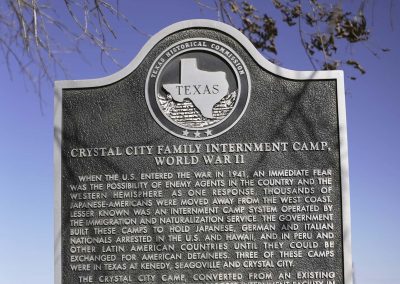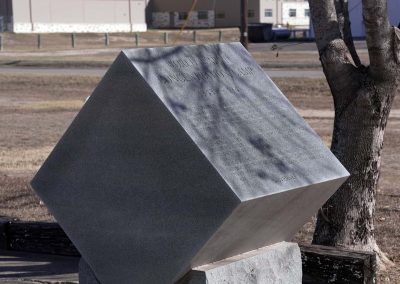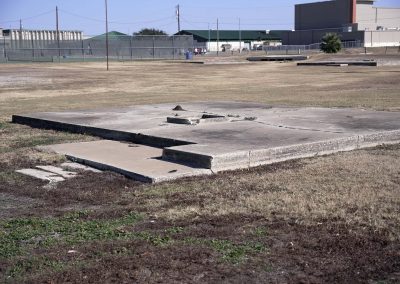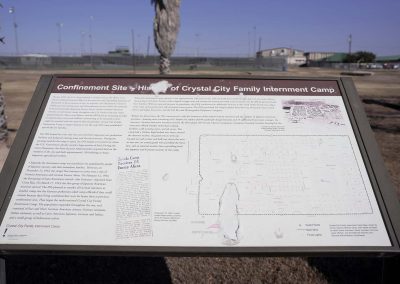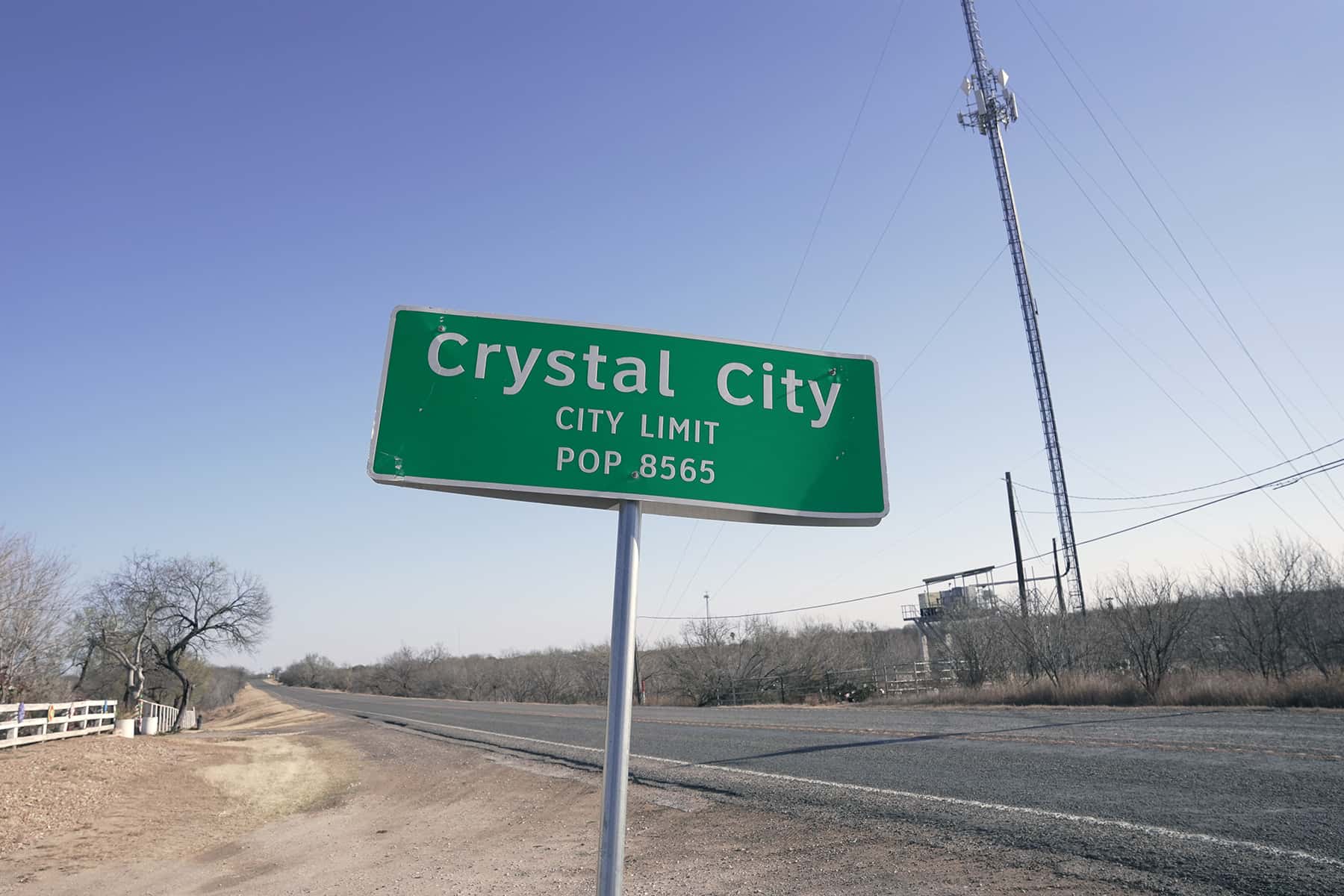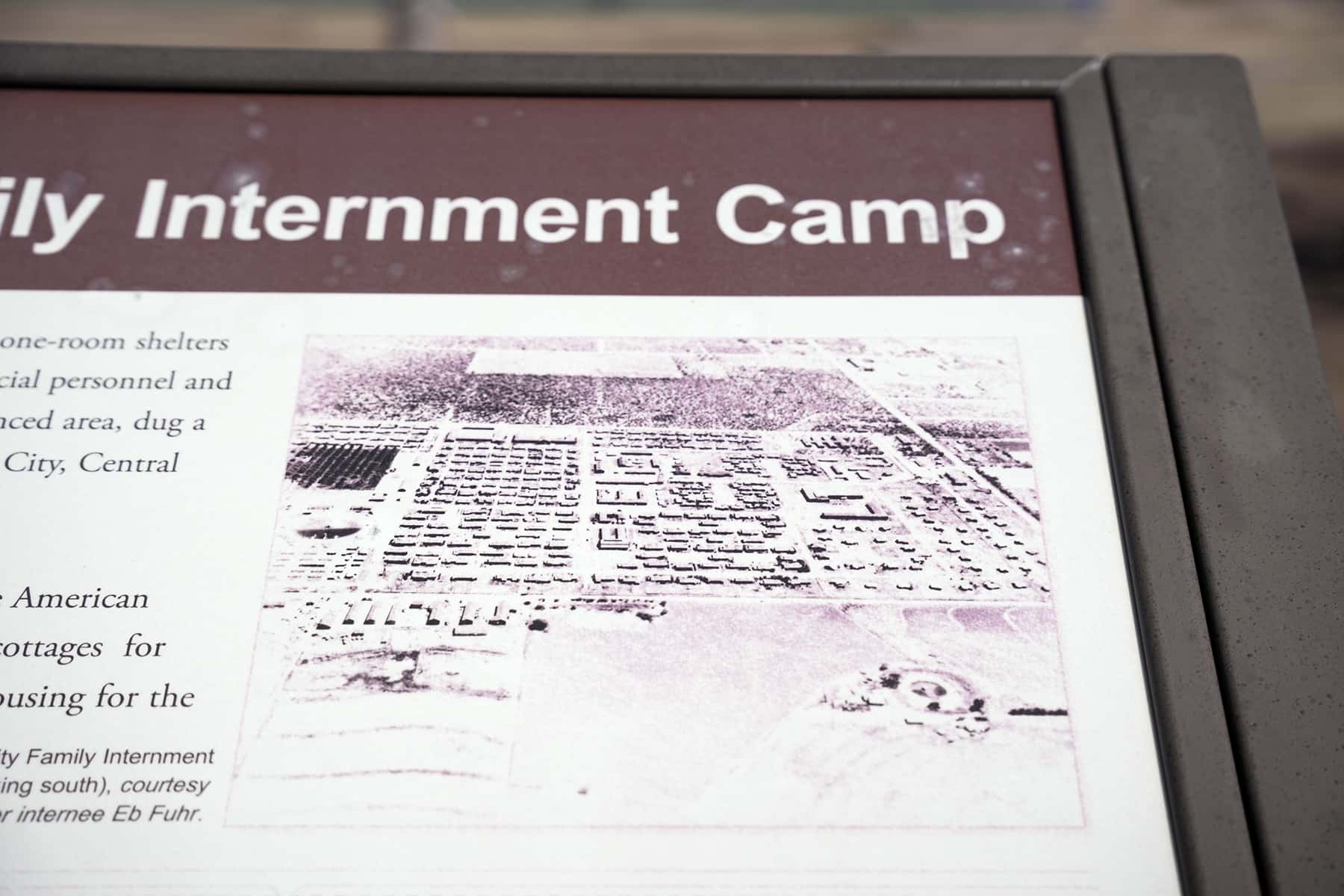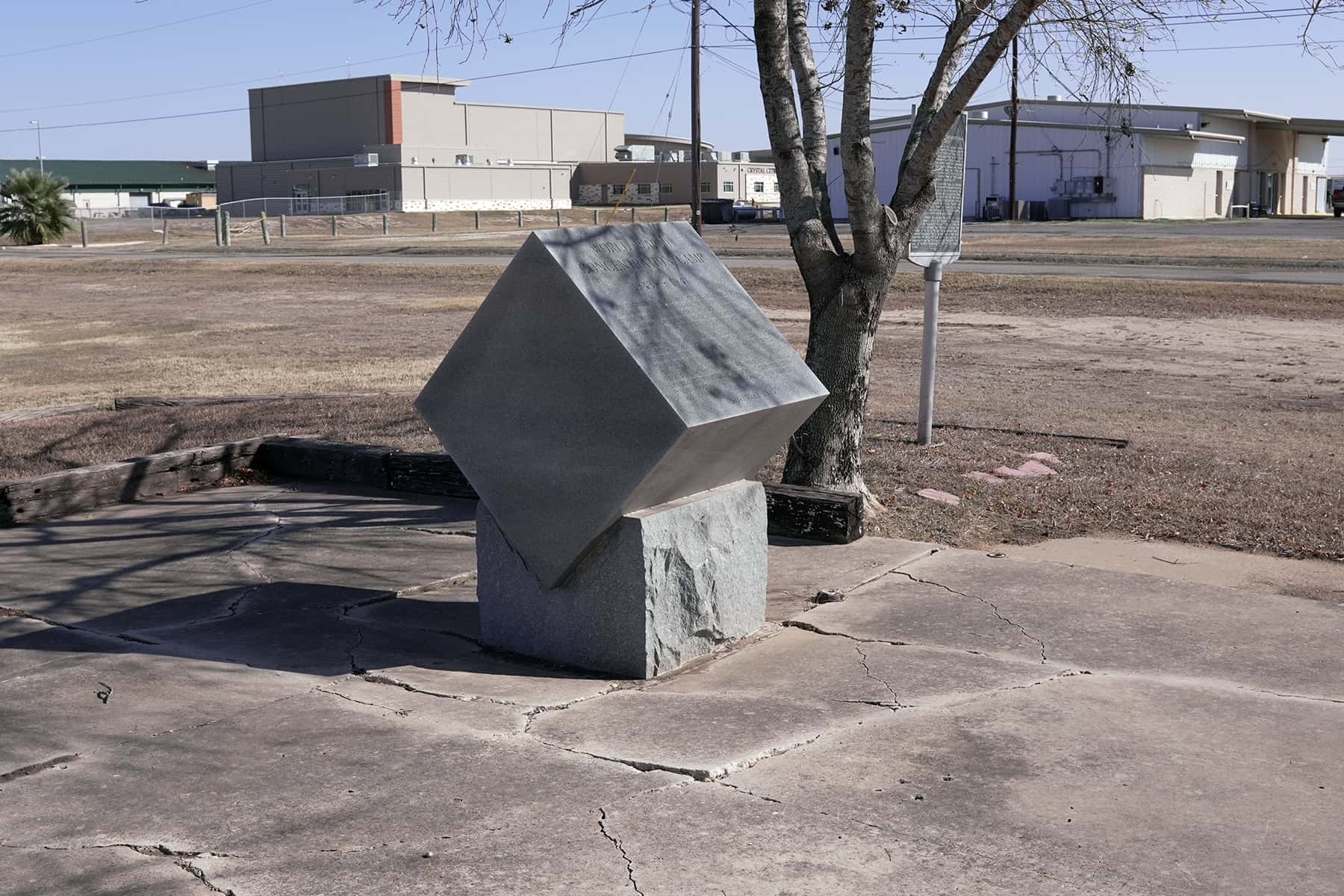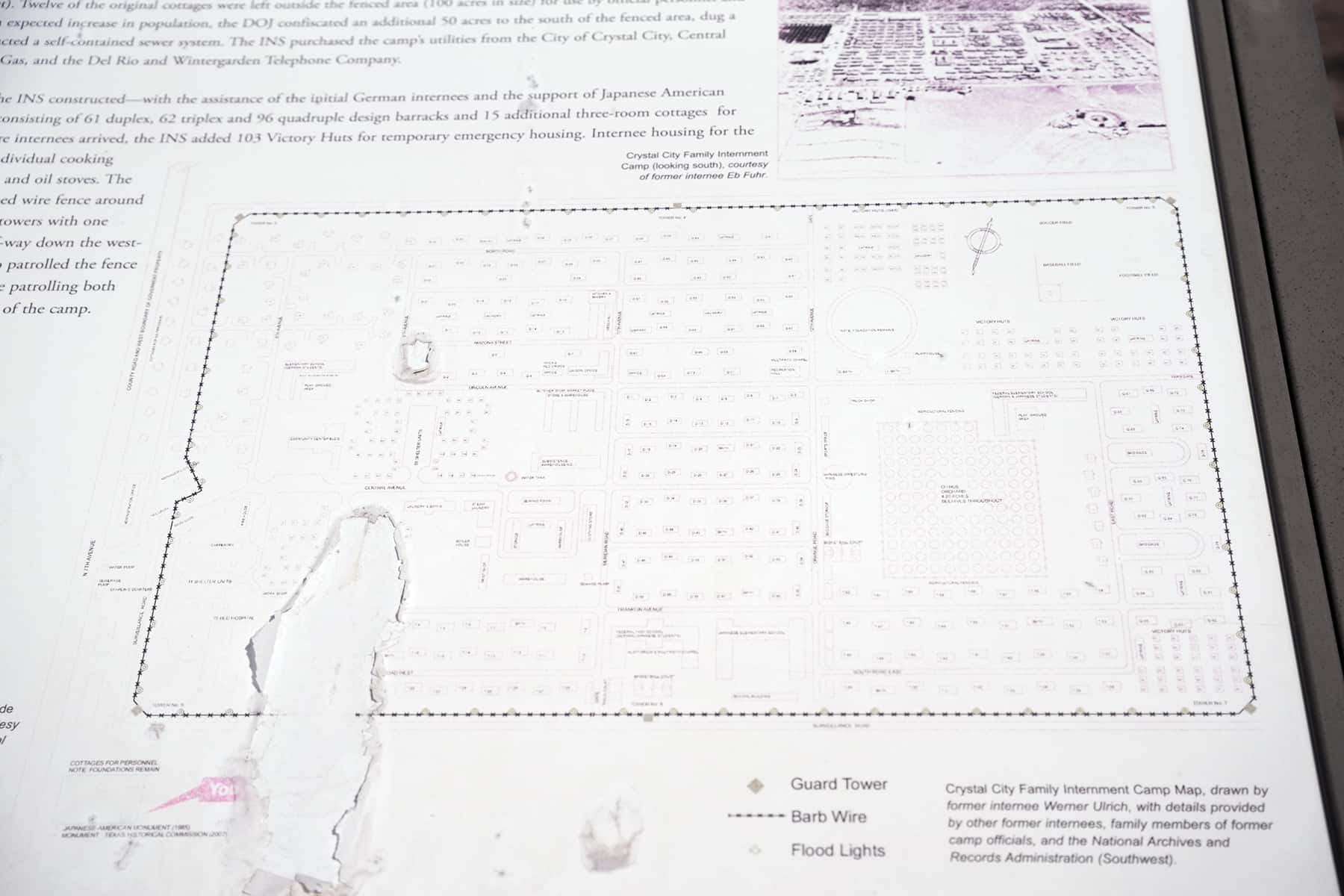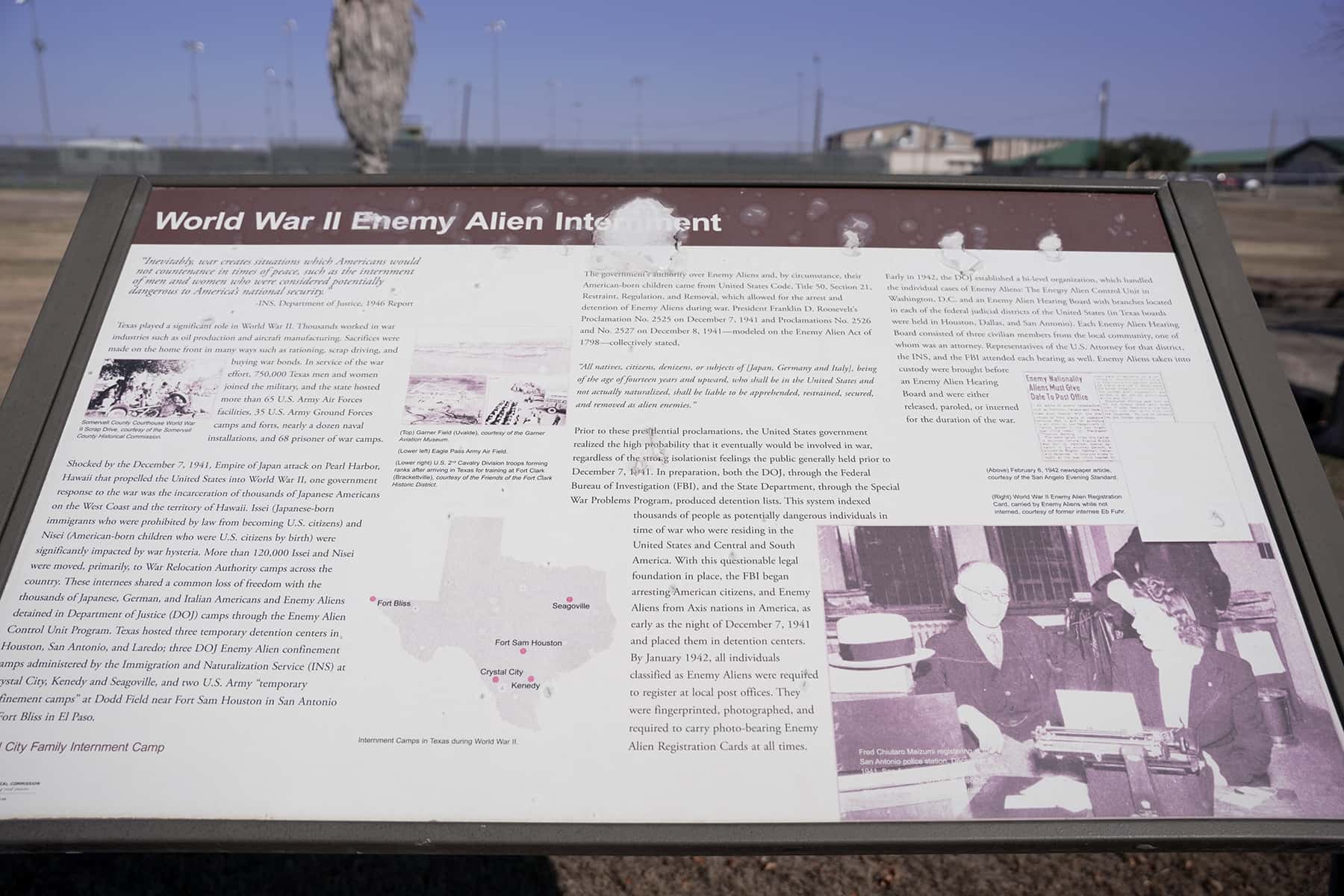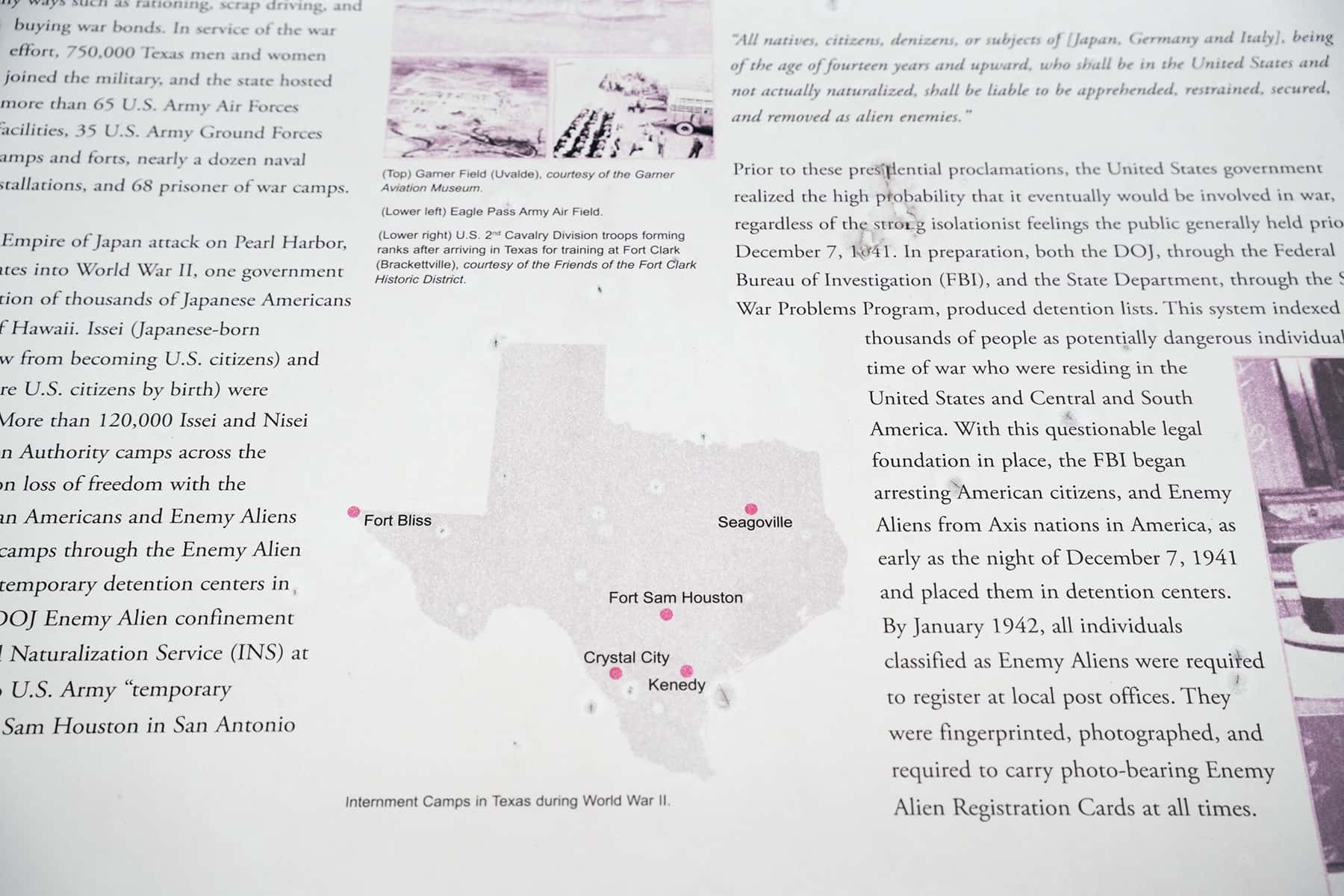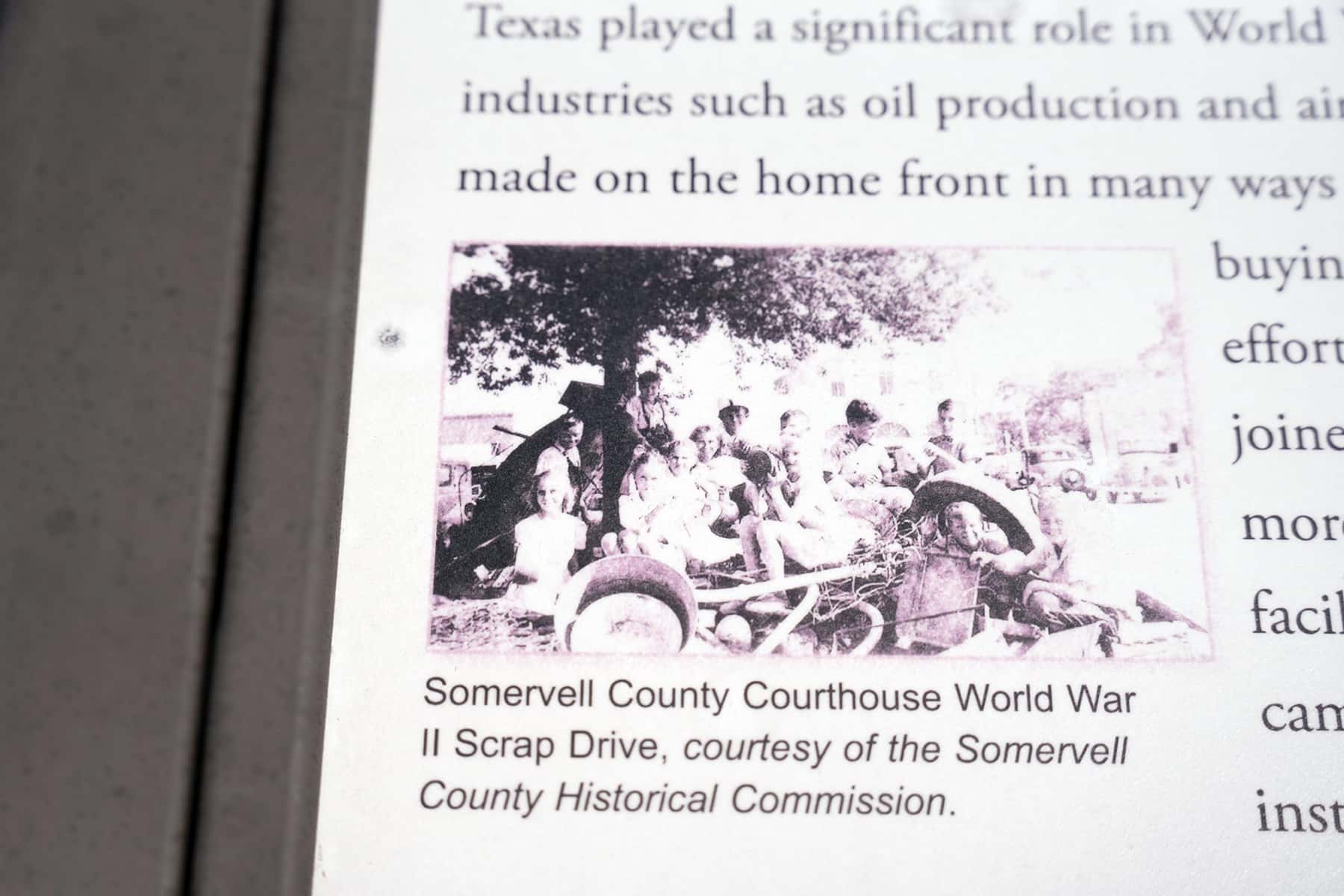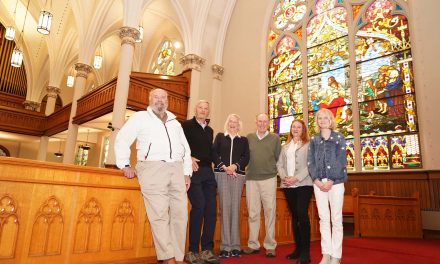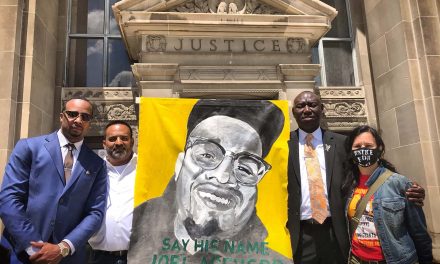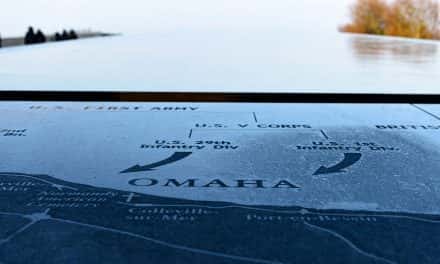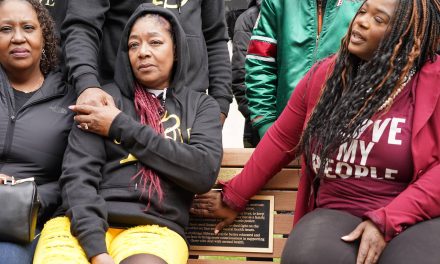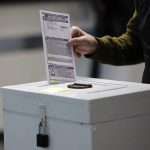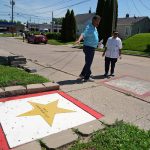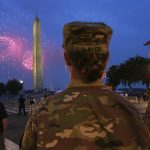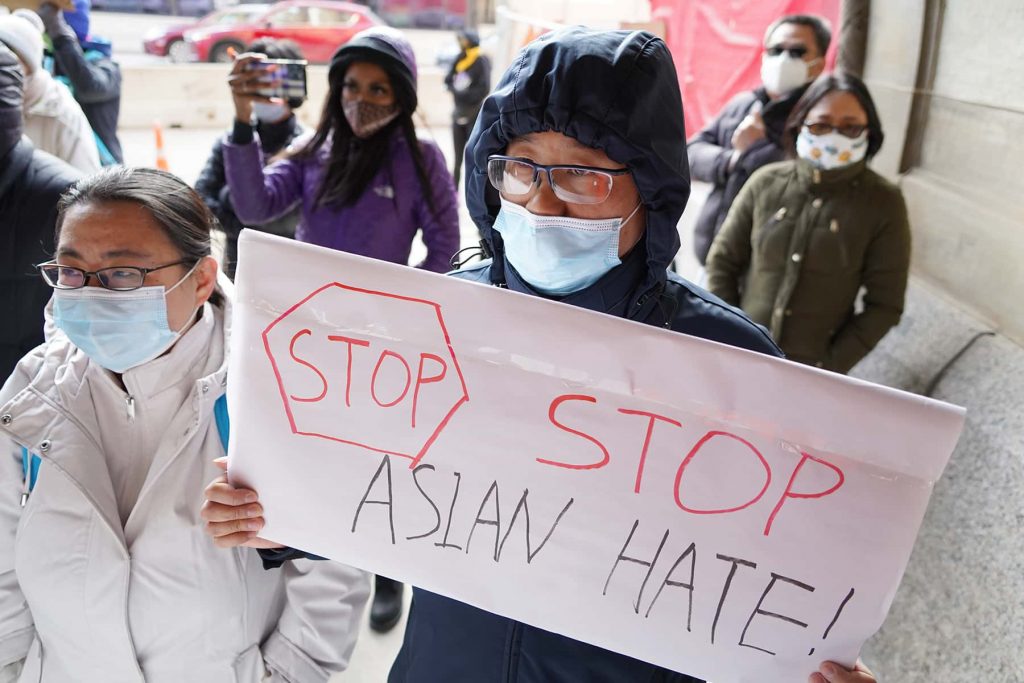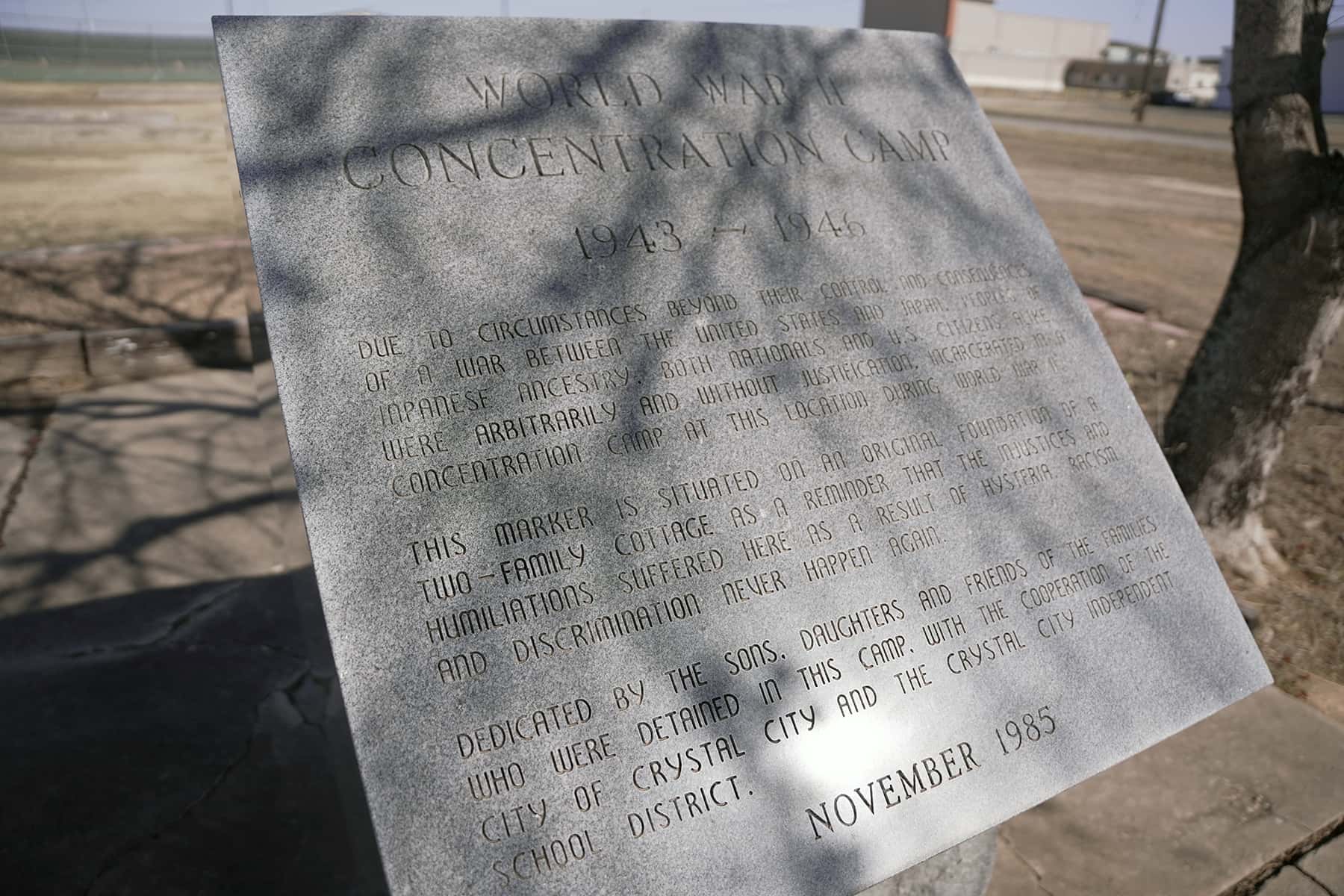
Today there are those who argue we should forego the honest teaching of our nation’s history as it may prove too traumatic to the descendants of those responsible. There are also attempts to justify more recent attacks on the freedoms and the families of those who may look or sound different. During my travels across South Texas, I found a point at which both efforts intersected.
While visiting my family in the small town of Crystal City, Texas, I spent time at a location I just learned existed. In the 1960s Crystal City was known as for its Civil Rights movement. Today it is the self-proclaimed “Spinach Capital of the World.” In 1942, it was the site selected by the United States government for our nation’s only family internment camp during World War II. All that remains of the camp is a memorial and a few concrete foundations of some the 700 buildings that once stood there.
Etched in the memorial is the story of the 6,000 men, women, and children that suffered in the camp, as well as a great many that were forcibly deported to Japan, Germany, and Italy as part of a secret U.S. prisoner exchange program. These individuals, mostly Japanese and Japanese Americans – along with others of German, Italian, and Latino decent, were traded for Americans and in some instances non-Americans deemed more desirable by the United States.
Their internment was authorized by a series of proclamations and executive orders issued by then President Franklin Roosevelt. Though none were ever charged with espionage or other crimes, these businessman, tradesman, photographers, and other professionals were labeled as “potentially dangerous enemy aliens.”
These individuals, along with their families, were denied their freedom, stripped of their businesses, homes, and possessions. Many, even those who were United States citizens, were deported to countries they had never known as part of the secret program.
While there are written accounts of the efforts made by the commandant of the camp trying to maintain the human dignity of those interned, it was still a family internment camp, where adults were forced to work, with a barbed wire fence patrolled by armed guards on horseback, and the promise that anyone attempting to escape would be killed.
As I stood there, before the memorial, I could not help but think of another policy implemented just four years ago by presidential executive order. It was a policy that not only detained families, but while in detention, forcibly removed young children from their parents. The policy was touted as being so horrific that it would deter others from seeking freedom and a better life for their family in the United States. Sadly, this policy was enforced less than 50 miles away from Crystal City, along the Mexican border with the United States.
As a nation that prides itself on being the champion of human dignity, with many proclaiming their faith and espousing the benefits of freedom and the importance of the family, it is more than concerning that so many are attempting to sanitize our history of the times we have fallen short of the mark. And even more so, are willing to justify the sins of our not-so-distant past.
We are a great nation, but we must strive to be better. If America is to fulfill its promise, we must acknowledge, teach, and learn from our past. It is our responsibility to apply these lessons to our present, because they are an investment in our future. We must be willing to call out acts of hate and racism in the moment. Failing to do so will relegate our nation to being “the land of the free” for some, but not for all.
“World War II Concentration Camp 1943 – 1946. Due to circumstances beyond their control and the consequences of war between the United States and Japan, people of Japanese ancestry, both nationals and U.S. citizens alike, were arbitrarily and without justification, incarcerated in a concentration camp at this location during World War II. This marker is situated on an original foundation of a two-family cottage as a reminder that the injustices and humiliations suffered here as a result of hysteria, racism, and discrimination never happen again. Dedicated by the sons, daughters and friends of the families who were detained in this camp. With the cooperation of the City of Crystal City and the Crystal City Independent School District. November 1985.” – Text from Memorial Marker
Darryl Morin
Jan Jarboe Russell’s The Train to Crystal City: FDR’s Secret Prisoner Exchange Program and America’s Only Family Internment Camp During World War II
Darryl Morin

